Social avatars in Europe a hundred years ago, there’s a lot to be seen in a small space
日期:11-28-2023 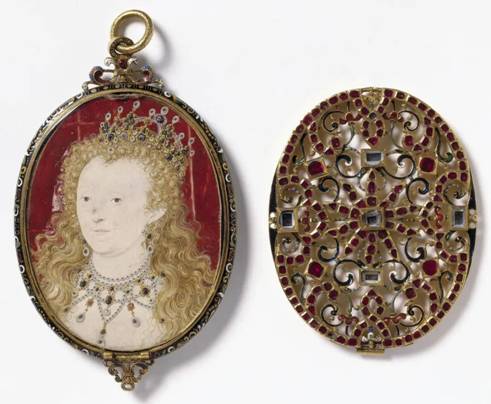
Miniature portrait of Elizabeth I,Nicholas Hilliard, about 1600,Collection of Victoria and Albert Museum
In 1857, the new South Kensington Museum (now the V&A) opened to the public. The museum acquired its first portrait miniature - a portrait of Queen Elizabeth I. Distant memories were reopened through a one-inch painting.
One hundred and sixty-six years later, in the Shanghai World Expo Museum's " A Glittering World of Masterpieces Treasures from the Rosalinda and Arthur Gilbert Collection " several exquisite and compact miniature portraits are also displayed in the exhibition. There are many famous people like Thomas Dimsdale.

If you have read the previous article "Tribute to Vaccination Pioneers ", you must know the story of Thomas Dimsdale. The luxurious miniature portrait on display was commissioned by the enamel painter Henry Bone in the year of Thomas's death. Today, we can still get a glimpse of Dimsdale's style through this small portrait.
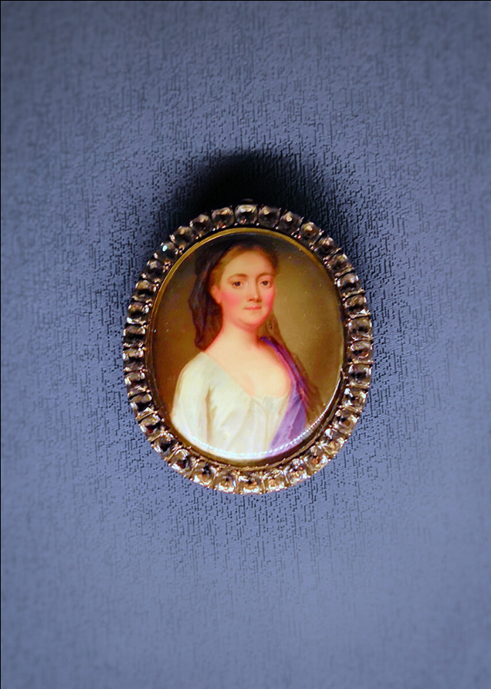
However, not all miniature portraits have a clear story behind them.

Portraits have been passed down from generation to generation, and the identity of some characters is difficult to identify, such as the so-called "Tilson couple" portrait in the exhibition. The inscription on Mrs. Tilson's portrait reads "Mother of Charlotte Tilson, Mrs. Dean." Although the inscription on the back of Mr. Tilson's portrait reads "Thomas Tilson, father of Mrs. Dean," it is in fact most likely a portrait of Sir Robert Dean, Mrs. Tilson's son-in-law.
The birth of ultimate pursuit
Miniature portraits are also called miniature portraits and miniature paintings.
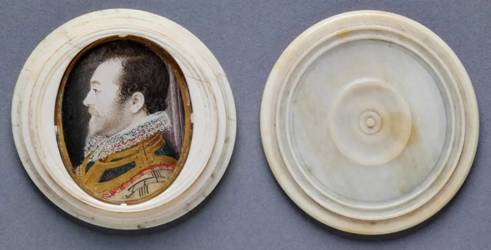
Miniature portrait of unknown member of the Barbour family
Nicholas Hilliard, circa 1590, Victoria and Albert Museum
These small-scale portraits first appeared in the 15th century at the courts of Henry VIII of England and Francis I of France.
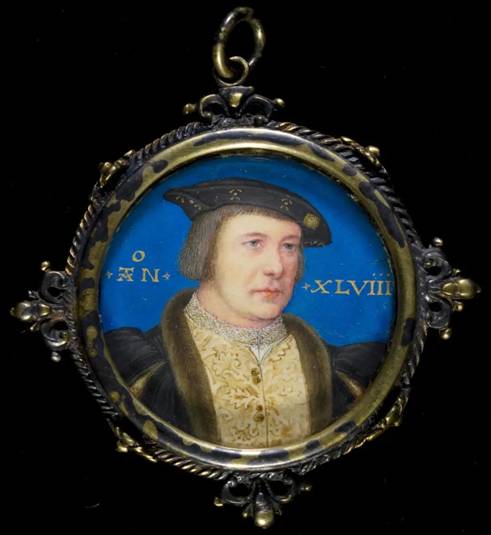
Miniature portrait of an unknown member, possibly Charles Brandon, Duke of Suffolk, Lucas Hobrent, circa 1532, Victoria and Albert Museum
What we today call "miniature painting" developed from the ancient medieval art of "illuminating" handwritten books with colorful illustrations and decorative borders. Both arts (portraits and book illustrations) were painted with watercolors and came to be known as "limning", a word derived from the Latin "luminare" meaning "to give light".
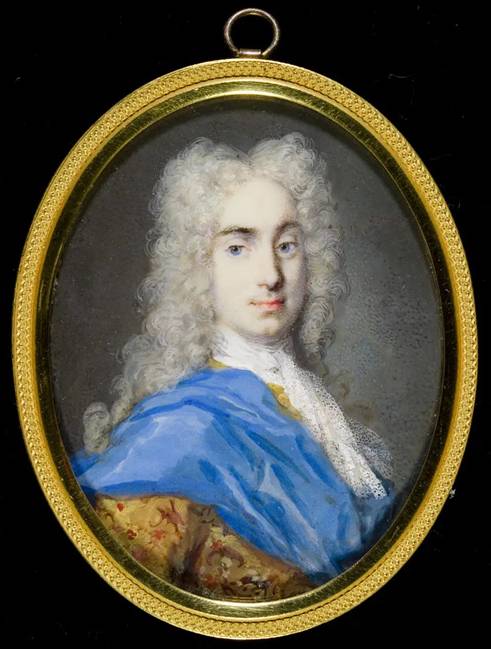
Miniature portrait of Marco Ricci, Rosalba Carrera, circa 1724, Victoria and Albert Museum
The English word "miniature" actually comes from "miniatura", Italian for limning, as in Edward Norgate's essay "Miniatura" or "The Arte of Limning", Written around 1628. But the anglicized word "micro" became popular around the same time and was used to refer to small things. This may be due to confusion between the small size and its association with words starting with the Latin root "min", meaning small, as in "minor". By the 18th century,"lime" was widely known as "miniature painting" and reached the peak of its popularity in London.
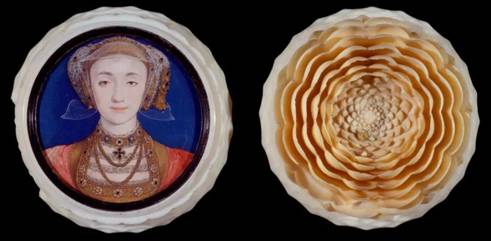
Miniature Portrait of Anne of Cleves, Hans Holbein the Younger
1539, Victoria and Albert Museum collection
Loved by the royal family
The miniature portraits have been sought after by many royal nobles. They wear them or inlay them on precious metal products such as dressing boxes and jewelry boxes to highlight their identity and status.
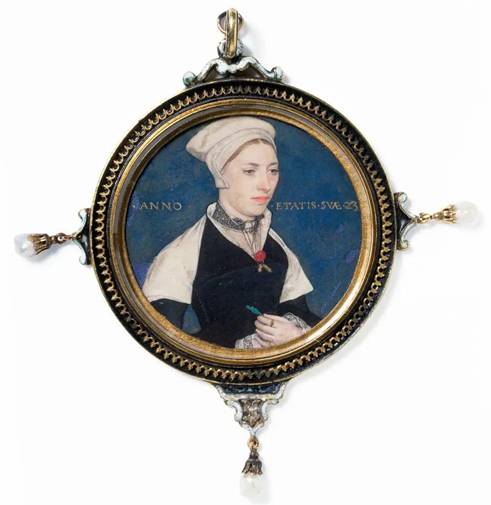
Miniature portrait of Lady Jane Small, Hans Holbein the Younger, circa 1540
Collection of Victoria and Albert Museum
Painters used oil paints and watercolors to paint on expensive materials such as ivory. Essentially, miniature portraits were an aristocratic art that served a few people. They were not popular among the people, and most painters gathered in the palace.
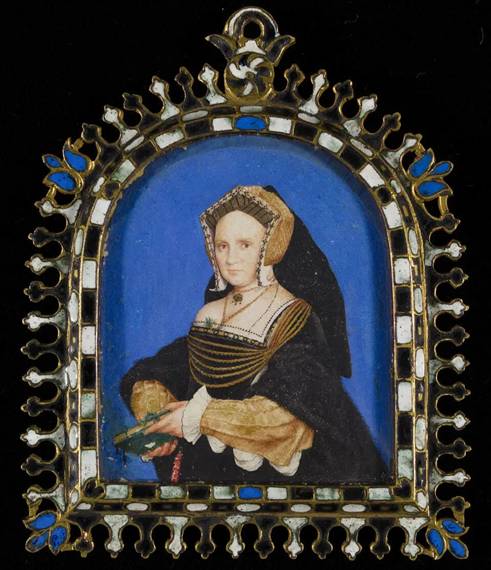
Miniature portrait of Lady Guildford, artist unknown
17th century, Victoria and Albert Museum collection
Because of their small size and high-precision craftsmanship, miniature portraits can be worn everywhere or given as gifts in public ceremonies to show the monarch's favor, which was of great significance to the British and European monarchies at that time.
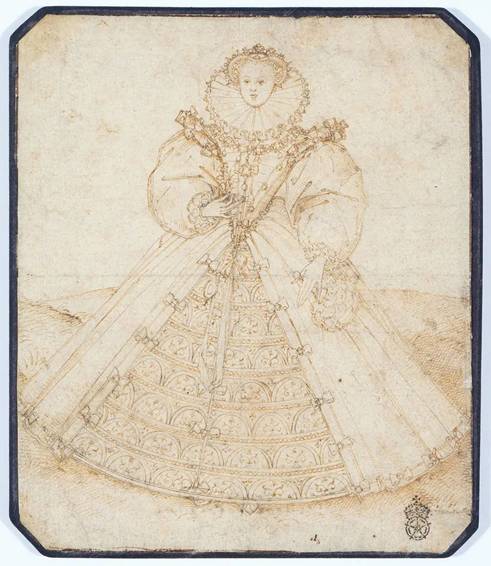
Elizabeth I, pen and ink drawing
Nicholas Hilliard, about 1585
Collection of Victoria and Albert Museum
During the Elizabethan period, when Protestant England was threatened by Catholic Spain, its wealthier subjects began to use the image of the queen as a sign of loyalty.
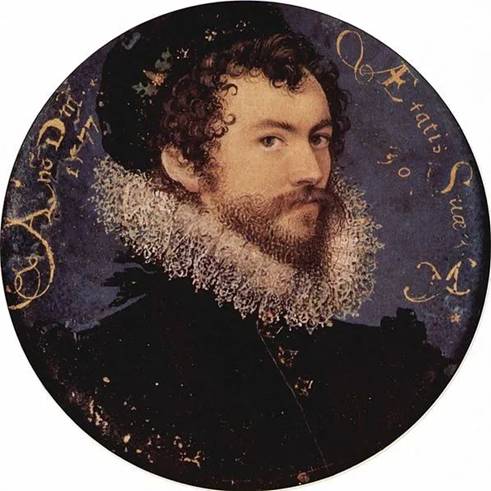
Nicholas Hilliard self-portrait
At that time, Nicholas Hilliard, who was a goldsmith and jeweler, was also one of the famous early pioneers of portrait miniature painting.
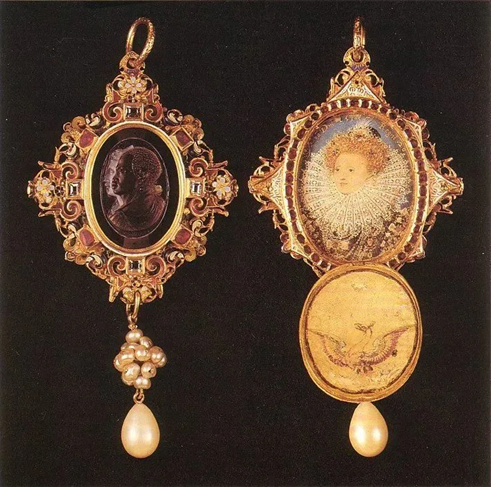
Miniature portrait of Elizabeth I,
Nicholas Hilliard
Queen Elizabeth I purchased miniature portraits of herself from him, which were affixed to her clothing. In order to show their loyalty, many members of the royal family purchased miniature portraits of the Queen from Nicholas Hilliard.
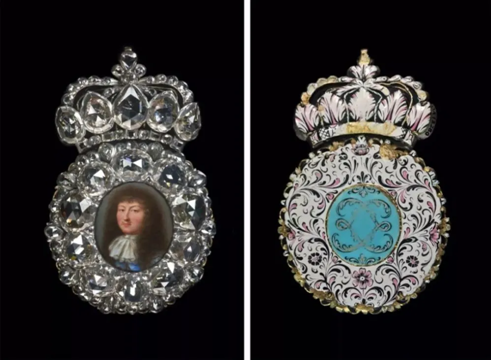
Miniature portrait of Louis XIV, Louvre Museum, France
Miniature portrait s were mainly used in diplomatic situations. This etiquette began with King Louis XIV of France. He made his own image into an enamel portrait and framed it with an exquisite diamond frame as a gift to envoys and ministers from various countries. If you don’t like it, you can still Converted into cash by the French Ministry of Foreign Affairs.
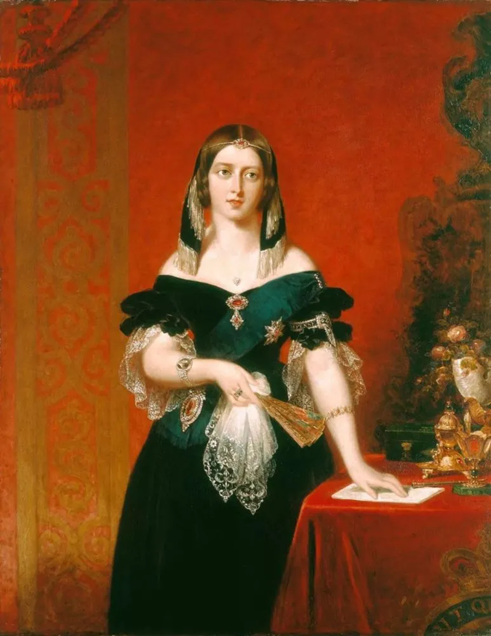
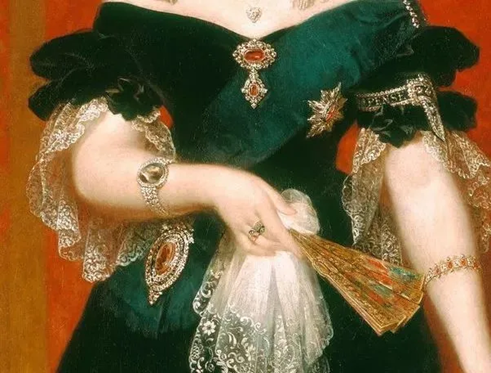
The painting Queen Victoria gave to her husband, Prince Albert, included a diamond bracelet with a miniature portrait of the prince.
Later, this kind of gift-giving etiquette became popular in Europe and Russia. Even if it is not necessarily possible to exchange cash at the Ministry of Foreign Affairs like in France, the surrounding jewelry can be disassembled and cashed out.
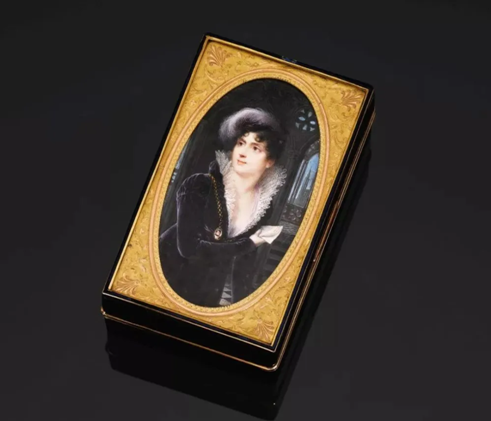
A French tortoiseshell gold-inlaid miniature portrait snuff box from the early 19th century was sold at Sotheby's for RMB 1,776,170.
Nobles and celebrities from various countries in later generations also attached great importance to these small paintings. Various gold and silver lockets, pendants, brooches, rings and snuff boxes specially made for portrait miniatures are all noble and luxurious.
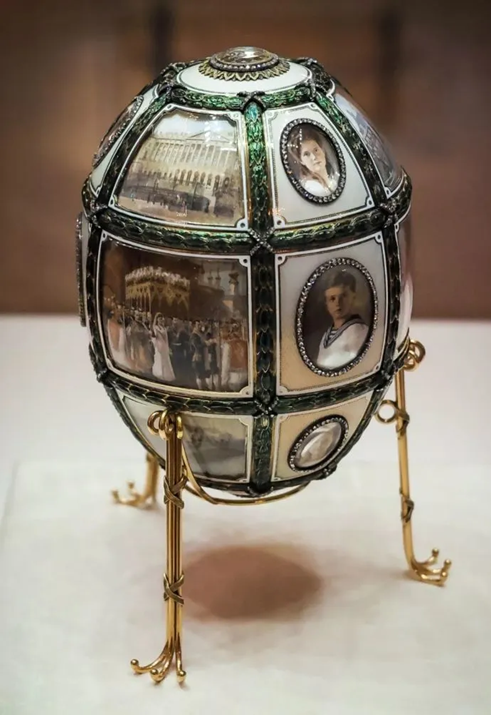
The egg created by Fabergé to commemorate the 15th anniversary of the Russian Czar's accession to the throne is inlaid with many miniature portraits of royal members.
The inlaid gemstones also have different meanings. Pearls often represent sweet or bitter tears, diamonds represent strength, garnets represent friendship and corals express the hope that the owner of the jewelry will be protected from harm.
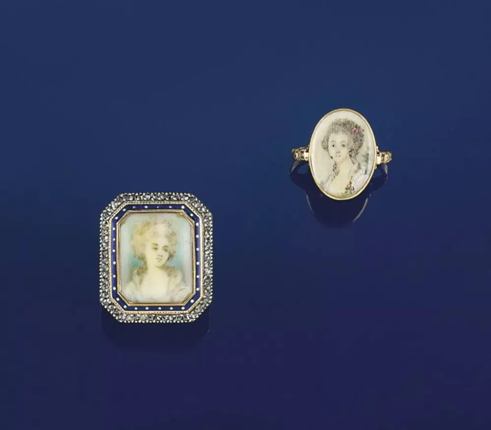
A miniature portrait ring from the late 18th century, once sold at Christie's
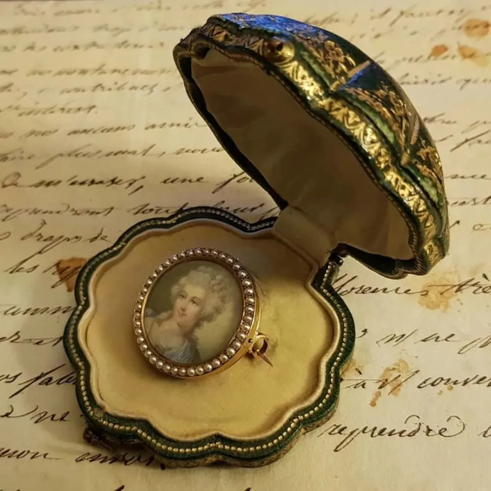
19th Century Miniature Portrait Brooch Surrounded by Natural Pearls, Private Collection
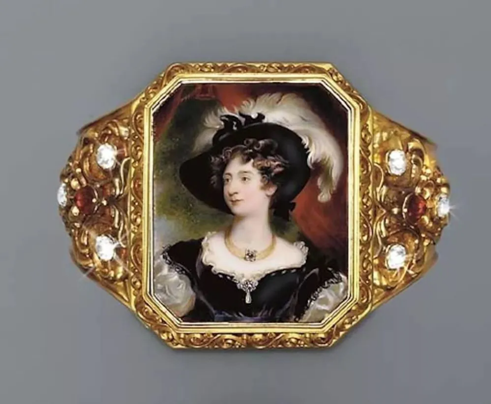
19th century diamond-encrusted miniature portrait
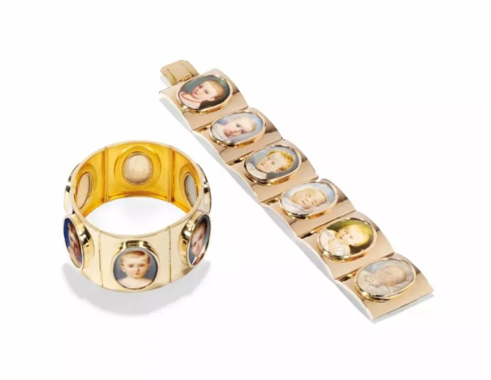
In the mid-to-late 19th century, the Duke of Montpensier in France customized a gold bracelet from the jewelry family Mellerio, inlaid with miniature portraits of his children.
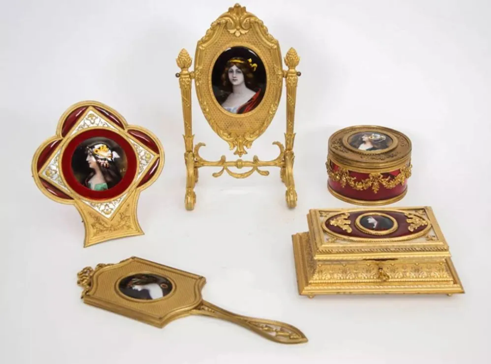
With the development of the times, miniature portraits have also become a token of love, sometimes exchanged at weddings; or a souvenir of a birthday or death.
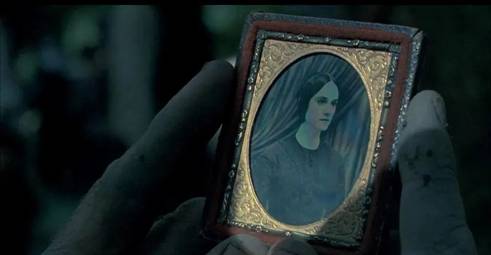
A still from the movie "The Piano Lesson" shows Stewart holding a miniature portrait on his way to the beach to pick up his fiancée Ada.
Nowadays, there are only a few painters who specialize in miniature portraits. From these microscopic works we can still appreciate the meticulousness and concentration of those years.
A Glittering World of Masterpieces Treasures from the Rosalinda and Arthur Gilbert Collection
Curator: Sun Yi
Exhibition period: September 26th - December 24th
Location: Exhibition Hall 1 of World Expo Museum
Ticket price: free